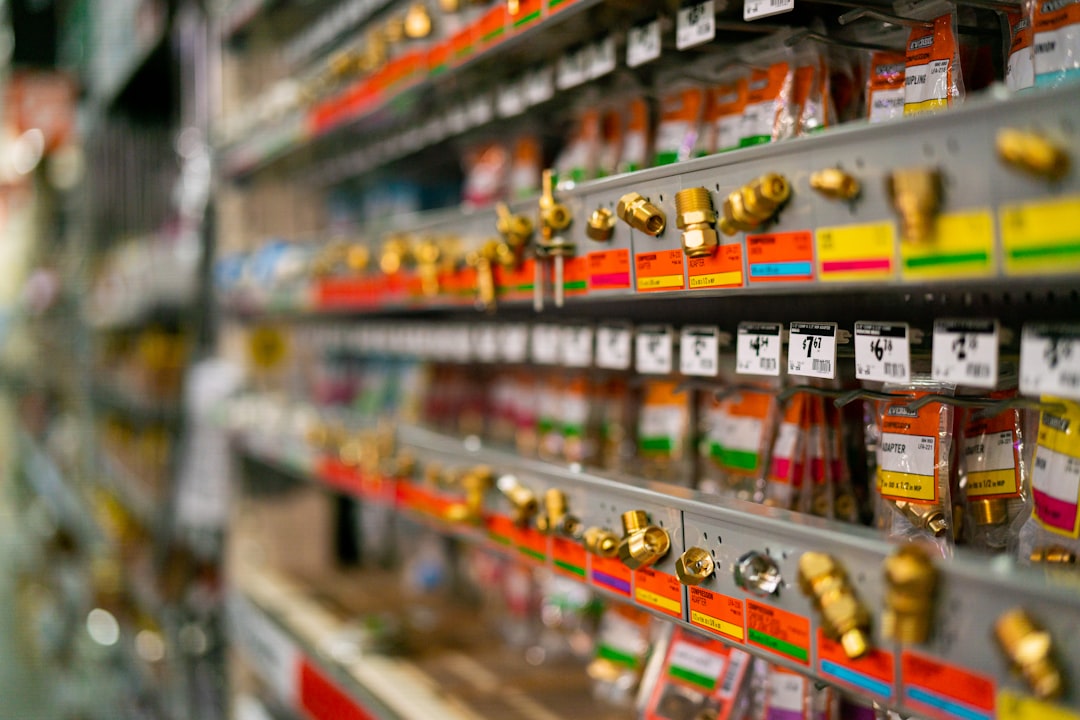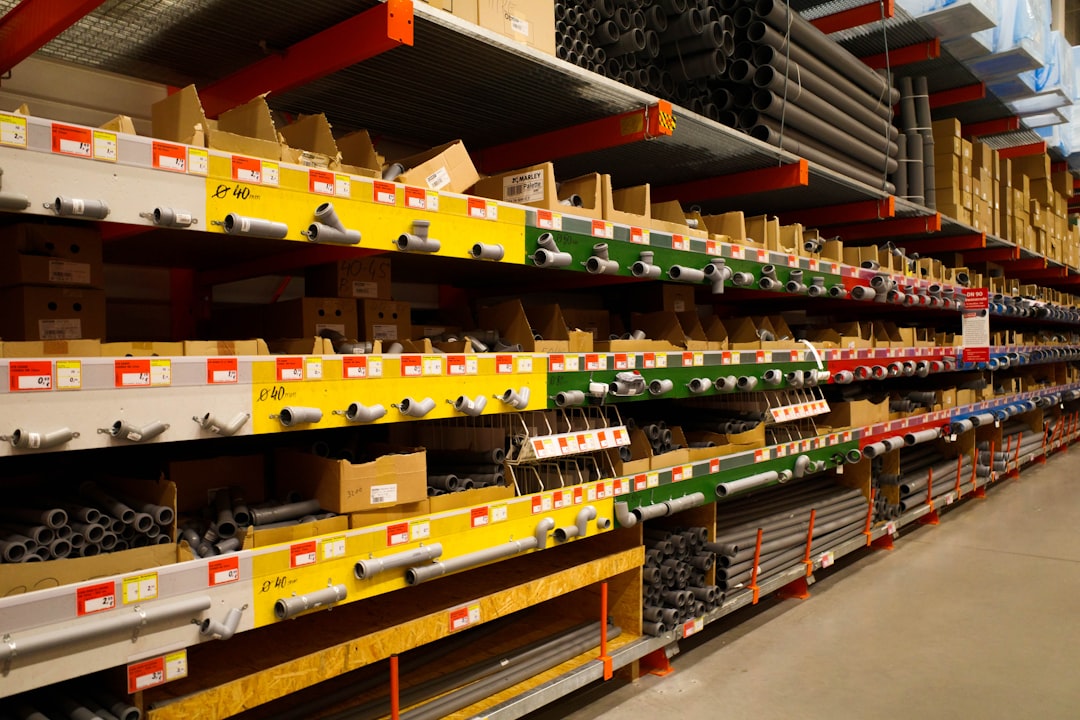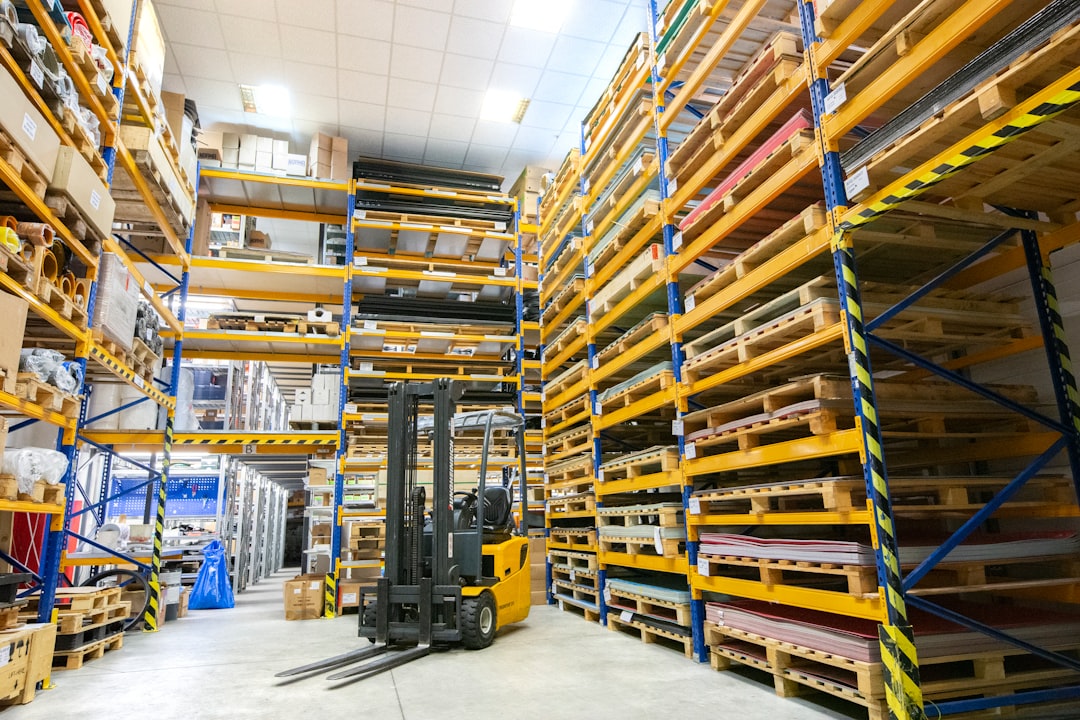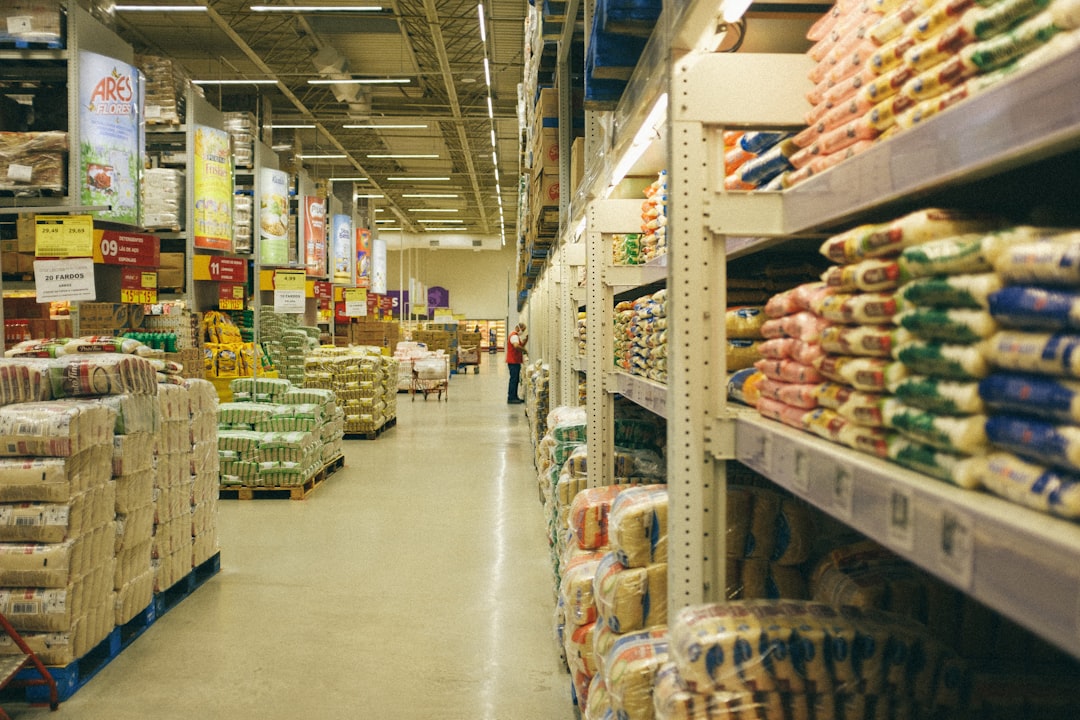

Engage prospects with a scan and streamline customer engagement with FREE QR code marketing tools by Sona – no strings attached!
Create a Free QR CodeFree consultation

No commitment

Engage prospects with a scan and streamline customer engagement with FREE QR code marketing tools by Sona – no strings attached!
Create a Free QR CodeFree consultation

No commitment
In today’s digitally driven world, QR codes have evolved from a novelty to a strategic powerhouse in bridging offline engagement with online action. For store fixture suppliers, QR codes represent a frictionless and effective way to guide retail buyers from in-person displays to product information, digital catalogs, and purchase-ready experiences, without requiring an app download or complex setup.
Many store fixture suppliers continue to struggle with challenges like capturing high-value leads that never formally make contact, tracking anonymous traffic at physical sites, and turning in-person engagement into actionable sales intelligence. As market demands for custom fixture solutions and sustainable materials increase, so does the pressure to demonstrate measurable value at every retail interaction. Integrating QR codes into physical environments directly addresses these frustrations, allowing suppliers to monitor conversion journeys, surface previously invisible engagement, and enable smarter, data-driven business decisions.
This article explores strategic QR code deployment for store fixture suppliers, showcasing tactical steps, industry trends, and best practices to convert every showroom visit or catalog scan into a qualified lead or customer. Learn how QR codes in marketing can drive conversions, streamline sales, and solve persistent challenges for retail fixture manufacturers.

Store fixture suppliers often miss out on high-value prospects because traditional analog workflows such as physical brochures or manual sign-up sheets fail to capture buyer intent that does not translate into direct inquiries. QR codes bridge this gap by linking physical touchpoints to digital outcomes and capturing engagement even from those who never submit a form. A scan can instantly trigger a quote request, a sample order, a spec download, or a meeting booking, which means fewer missed signals and more measurable outcomes.
Replacing outdated processes with a QR-centered approach not only builds a cleaner data trail, it also accelerates the path from interest to action. When every display, catalog, and mailer becomes a trackable gateway, your sales and marketing teams can finally see what works, identify drop-off points, and double down on the placements that generate qualified pipeline. See first-touch vs last-touch attribution models.
By shifting to a QR-centered strategy, suppliers can measure ROI on display efforts, streamline lead capture, and build scalable, high-return campaigns. The result is a steady flow of qualified leads from previously invisible interactions, coupled with stronger attribution across your go-to-market motion.

Visibility gaps are costly in a category where purchasing decisions often begin with tactile, in-person exploration. Buyers handle samples, walk showrooms, and browse catalogs, yet many never speak to a salesperson. QR codes turn those quiet moments into measurable steps by offering immediate digital actions that reduce friction and capture intent in real time.
They also align with the speed and flexibility modern buyers expect. A store manager evaluating fixtures wants specs, pricing context, and installation clarity without hurdles. A single scan can deliver a concise, mobile-optimized journey. When paired with dynamic content, you can update offers or product information without reprinting, and when paired with analytics, you can finally attribute revenue to specific touchpoints.
For store fixture suppliers, QR codes do more than capture scans. They create a connective tissue across your marketing stack so you can turn physical engagement into digital momentum and measurable revenue.

Not every buyer needs the same destination. Choosing the right QR format helps you match intent to action and reduce friction. For store fixture suppliers, the most effective formats align with discovery, evaluation, and purchase readiness across multiple touchpoints, from showrooms to packaging.
Dynamic QR codes are especially valuable because they give you the flexibility to update content and monitor performance without reprints. They also enable segmentation by product line, persona, or event, which feeds smarter retargeting and lead scoring later.
Together, these formats ensure every engagement is captured and routed to a destination that matches the buyer’s context. When managed through a platform like Sona QR, your team can update links, manage versions, and analyze performance in one place.

You will find the best QR opportunities wherever decision-makers are already pausing to evaluate materials, compare options, or plan projects. These are moments when a little extra clarity, convenience, or proof can nudge them forward. By placing QR codes at those moments, you transform browsing into booking, and interest into intent signals you can track. For additional retail context, explore QR in retail.
Focus on placements that align with high-intent actions. A QR code tucked in a corner will not change behavior, but a clear call to scan right where someone compares finishes or reads installation details on retail displays can dramatically lift engagement.
A strategic deployment approach ensures that momentary interest never slips through the cracks. The right placements convert high-traffic surfaces into reliable acquisition and nurturing channels.
The most persistent challenge in this space is turning physical engagement into measurable digital touchpoints. QR-enabled use cases can be integrated across the entire lifecycle so you know who is engaging, what they care about, and when they are ready to buy.
Center your use cases on the actions you want buyers to take. The more concrete and immediate the outcome, the higher the scan rate and the clearer the attribution.
By embedding QR-driven interactions across product discovery, buying, and post-sale support, you can pinpoint where leads arise and orchestrate timely outreach that moves deals forward. See these practical QR marketing ideas.
Each QR scan provides rich context. With the right structure, you can use that context to segment audiences by intent, product interest, and lifecycle stage, then feed those segments into your CRM and ad platforms for tailored follow-up.
Segmentation ensures you nurture buyers based on what they actually scanned rather than broad assumptions. It also lets your team prioritize the warmest opportunities for direct outreach while continuing to build trust with earlier-stage contacts through targeted content.
With a platform like Sona QR, each code becomes a smart entry point that automatically enriches your database and fuels behavior-based retargeting.
QR codes connect the dots across the channels store fixture suppliers rely on most. They bring measurement to print and events, reduce friction in showrooms, and create a straight line from offline interaction to online action.
Your goal is to keep the experience consistent. The scan should always deliver a mobile-friendly page with a clear next step, whether that is a spec download, a sample order, or a booking. When every channel drives to a cohesive journey, attribution becomes straightforward and optimization becomes simple.
When deployed across these channels, QR codes serve as the offline onramp to your digital engine. Centralized management and analytics through a platform like Sona QR let you monitor performance and sync scan data with your CRM.
Lost or neglected prospects are a common frustration in high-touch industries like fixtures, often due to incomplete tracking or unclear post-scan journeys. A well-constructed QR campaign resolves these issues by defining purpose, aligning placements with buyer behavior, and connecting scans to automated workflows.
Use this checklist to plan and launch a campaign that transforms real-world engagement into measurable pipeline. Each step includes practical guidance tailored to the way buyers discover, evaluate, and purchase fixtures.
Start by deciding which outcome matters most for your next campaign. Common goals include increasing quote requests for a new modular system, generating sample kit orders for a new finish line, or booking showroom consultations ahead of seasonal resets.
Your code type determines both flexibility and measurement. Static codes are fine for timeless content, but most commercial campaigns benefit from dynamic links you can edit and analyze.
Design choices have a major impact on scan rates. Make the code visible, the CTA compelling, and the surrounding design clean. Then test in the environments where it will live.
Focus on surfaces that meet buyers at decision points. Your placements should anticipate questions and remove friction at the exact moment buyers want more information.
Treat every deployment as a test that will inform the next one. Build feedback loops into your process so that insights flow quickly from the field to your marketing and sales teams.
Traditional campaigns make it hard to prove which print pages, signs, or displays influenced a sale. Advanced QR tracking closes that gap by linking scans to identities, sessions, and outcomes so you can attribute revenue to specific assets and optimize spend.
Start by capturing robust scan data at the code level, then connect that data to downstream behaviors such as form fills, meetings booked, and deals created. The goal is a single chain of custody from scan to sale that your team trusts.
With Sona QR and Sona.com, you can go beyond raw scan counts. Sona QR tracks scans with campaign context and syncs with CRMs like HubSpot and Salesforce. Sona enriches identities, performs multi-touch attribution, and unifies scans with website visits, ad clicks, and email engagement so you can connect QR activity to pipeline and closed revenue with confidence.
Scaling QR impact requires a consistent operating rhythm. Standardize how you generate codes, build landing pages, tag audiences, and follow up. As your library of QR-enabled assets grows, consistent measurement will guide investment toward the highest-ROI placements and creative.
Training also matters. Staff who know how to point buyers toward QR actions can increase scans and set clearer expectations about what happens next, which boosts conversion.
Consider creative deployments as well. For example, place QR codes on eco-friendly fixtures that link to sustainability reports and lifecycle data, or add a QR to an installation toolkit that opens a step-by-step video guide and registers the warranty automatically.

Many suppliers struggle to quantify engagement from showrooms and events. The following examples illustrate how QR codes can turn those anonymous moments into measurable growth while improving buyer experience. Browse more QR marketing ideas.
Small changes in placement and messaging can yield outsized results. When you align the QR action with the buyer’s immediate need, scan rates climb, and those scans can be turned into high-quality leads and faster conversions.
These outcomes show what happens when measurement and buyer-centric design converge. QR codes are the mechanism, but clarity of purpose and follow-through are what turn scans into revenue.
Even experienced teams can miss easy wins with QR design and placement. The most common mistakes include codes that are hard to find, calls to action that lack a clear benefit, and follow-up processes that do not align with buyer expectations. A few adjustments can quickly improve scan rates, engagement quality, and attribution accuracy.
Treat every QR code as the start of a guided experience. Make sure the destination is mobile-friendly, the next step is obvious, and the hand-off to sales or support is timely. Test and refine these elements before scaling.
Addressing these fundamentals prevents avoidable friction and maximizes the impact of your QR program. Combine them with discipline around analytics and follow-up, and you will see measurable lifts across your funnel.
QR codes represent a strategic evolution for store fixture suppliers, ensuring every physical fixture, display, or brochure becomes a measurable and actionable gateway into the digital marketing pipeline, overcoming visibility gaps and lost opportunity costs that have long challenged the industry.
Integrating QR-driven engagement across all touchpoints, from showrooms to packaging, allows suppliers to surface hidden buyer intent, connect offline actions to digital journeys, and use real-time data to continually refine sales and marketing strategies. The teams that succeed treat QR not just as a transactional tool, but as a foundation for ongoing relationship-building, higher conversion rates, and sustained differentiation in an increasingly competitive, sustainability-focused market.
By adopting a platformed, data-driven approach, store fixture suppliers can finally close the loop on in-person engagement, capturing every scan, nurturing stalled or anonymous opportunities, and fueling business growth through measurable, intent-rich interactions at every step. Tools like Sona QR for QR generation and tracking, paired with Sona.com for attribution and buyer journey analytics, can accelerate this transformation and make it easy to connect scans to revenue in a repeatable way. Start creating QR codes for free.
QR codes have transformed the store fixture suppliers industry from static product displays into interactive, measurable sales drivers. Whether it’s attracting new clients, enhancing the in-store experience, or streamlining order and inventory processes, QR codes enable instant access to product details, customization options, and seamless communication that turn every fixture into a powerful conversion tool. Imagine knowing exactly which fixtures generate the most inquiries and orders—and being able to optimize your marketing on the fly.
With Sona QR, you can create dynamic, trackable QR codes in seconds, update campaigns instantly without the need to reprint fixtures, and link every scan directly to revenue streams. No more guesswork or missed opportunities—just smarter, more efficient ways to grow your business and delight customers.
Start for free with Sona QR today and turn every scan into a lead, a sale, or a lasting client relationship.
QR codes help store fixture suppliers bridge offline engagement with online action by capturing buyer intent, tracking anonymous traffic, and converting in-person interactions into measurable sales intelligence.
Static QR codes are suitable for fixed, timeless content, while dynamic QR codes enable trackable, editable destinations and analytics, making them ideal for commercial campaigns with changing content.
QR codes should be positioned at natural pause points such as showroom displays, demo stands, catalogs, event booths, packaging, and in-store POP materials where buyers evaluate products or plan projects.
QR codes collect scan data including time, location, and device, linking offline interactions to digital outcomes and allowing suppliers to attribute revenue to specific assets and optimize marketing spend.
Effective QR code formats include web links to catalogs or AR previews, forms for sample or quote requests, vCards for contact sharing, SMS or email triggers for inquiries, and app downloads for deeper engagement.
By creating unique QR codes for different engagement stages, tagging scans by product interest, tracking scan context, and syncing data to CRM and ad platforms, suppliers can segment and nurture buyers with tailored follow-up.
Common mistakes include placing codes in hard-to-find locations, using unclear calls to action, creating cluttered designs around codes, and lacking timely follow-up aligned with buyer expectations.
While the article does not specify exact costs for store fixtures, QR codes are inexpensive to generate, fast to deploy, and cost-effective to scale across marketing materials, adding measurable value without significant expense.
Latest trends include integrating dynamic QR codes that enable real-time content updates, AR previews on fixtures, sustainability storytelling via QR links, and embedding QR codes across multi-channel marketing for seamless offline to online engagement.
Suppliers should track scans by channel, location, and time, measure conversion rates, A/B test CTAs and placements, automate follow-up workflows, and use analytics platforms like Sona QR to unify data for continuous campaign improvement.
Use Sona QR's trackable codes to improve customer acquisition and engagement today.
Create Your FREE Trackable QR Code in SecondsJoin results-focused teams combining Sona Platform automation with advanced Google Ads strategies to scale lead generation

Connect your existing CRM

Free Account Enrichment

No setup fees
No commitment required

Free consultation

Get a custom Google Ads roadmap for your business






Launch campaigns that generate qualified leads in 30 days or less.
